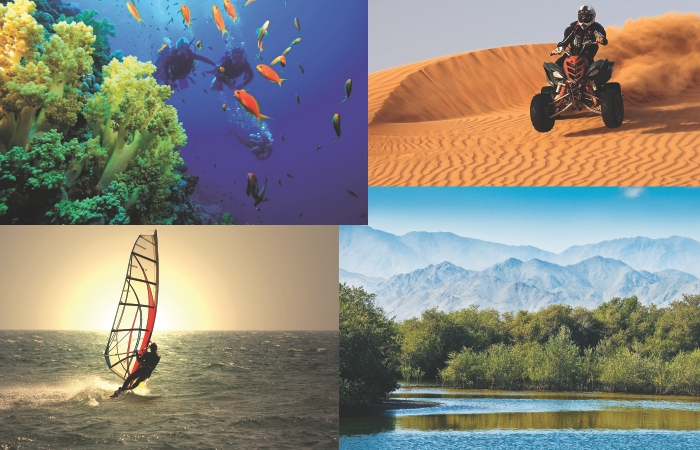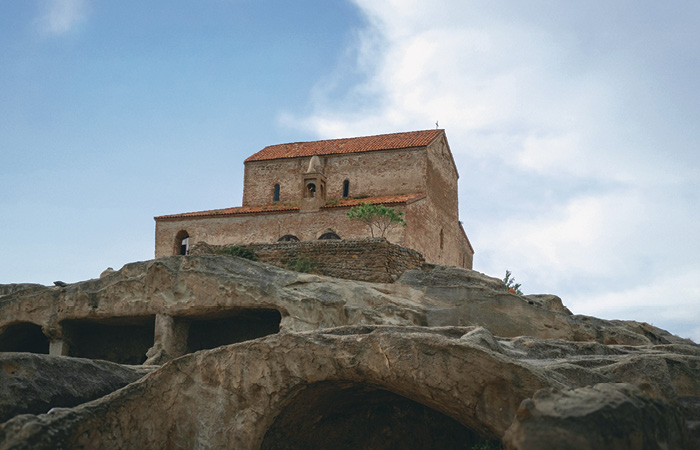Sharjah is the third largest of the seven emirates that make up the United Arab Emirates (UAE). It has carved itself a unique niche in terms of its culture and heritage, setting itself far from the bright lights and skyscrapers found in its neighbouring emirates.
TT Bureau
Sharjah has an active tourism industry and receives approximately two million guests directly into its accommodation sector each year. Sharjah offers a complete range of accommodation from apartments to hotels, across a diverse portfolio of international brands and local boutiques. There are currently 10,000 keys available within the emirate with a further 7000 rooms due to come on line before 2020.
Sharjah is the only emirate to have coastlines on both the east and west coast and over the last few years the Sharjah Commerce and Tourism Development Authority (SCTDA) has looked towards the east coast to launch a new layer in its tourism portfolio: ‘outdoor tourism’. Through this new proposition the emirate brings to all visitors and guests what can only be described as “a remarkable experience” as they are encouraged to enjoy the outdoors through the diverse environment that can be discovered in Sharjah.
The east coast has a rich tourism potential offering a coast filled with exotic sea life and corals, mangroves, wadis, and mountains. The infrastructure is becoming more developed, the new road construction from Khorfakan to Sharjah has already been called the “road of tunnels” and will reduce the additional 60 km distance to 16 km and the driving time should now be just 45 minutes.
Kalba has long been reputed for its peace, tranquility and areas of natural beauty and the newly proposed ecotourism project will create a sustainable platform for tourism development, keeping a careful balance on putting conservation ahead of development. This said there will also be a development of retail and coffee shops on the edge of a manmade lagoon. The most exciting of these developments are the new eco-lodges, which are a ‘safari styled’ luxury tent with private swimming pools and five star facilities adding more bed spaces to the tourism growth in the region. The walkways into the mangroves will make it possible to observe the flora and fauna with minimal invasion and impact on the rare species found in this area.
The newly-opened Hefaiyah Mountain Conservation Centre and protected area is another highlight for visitors to this area. The 12- km two wildlife conservation centre borders the Hajjar mountains and offers visitors a chance to see the critically endangered Arabian leopard (Panthera pardus nimr) and other endangered species including the Arabian wolf (Canis lupus arabs) and the Arabian Tahr (Arabitragus jayakari), which are both classified by the IUCN as ‘Threatened’; and the striped hyena (Hyaena hyaena), which is classified as ‘Near Threatened’. Recently, the centre has enjoyed particular success in breeding endangered Damani gazelles from breeding stock introduced in 2012. The mountain conservation centre has tourist facilities and employs full-time trained guides to show visitors the reserve and answer questions about Arabian wildlife.
Also keeping the theme, the Kalba Birds of Prey centre can be found in the outskirts of Kalba town, which accommodates a variety of resident and migratory raptors. Visitors to the centre can see birds of prey such as the barn owl, short-toed snake eagle, greater spotted eagle, and lappet-faced vulture. Live demonstrations and bird of prey displays are held daily for visitors during the winter months.
Tourism in Sharjah has certainly seen growth and investment in new markets which has meant increased room nights throughout the year. The authority will continue with its promotion of Sharjah as a remarkable experience as it continues to develop new packages encompassing outdoor tourism, culture and heritage.
 TravTalk Middle East Online Magazine
TravTalk Middle East Online Magazine





